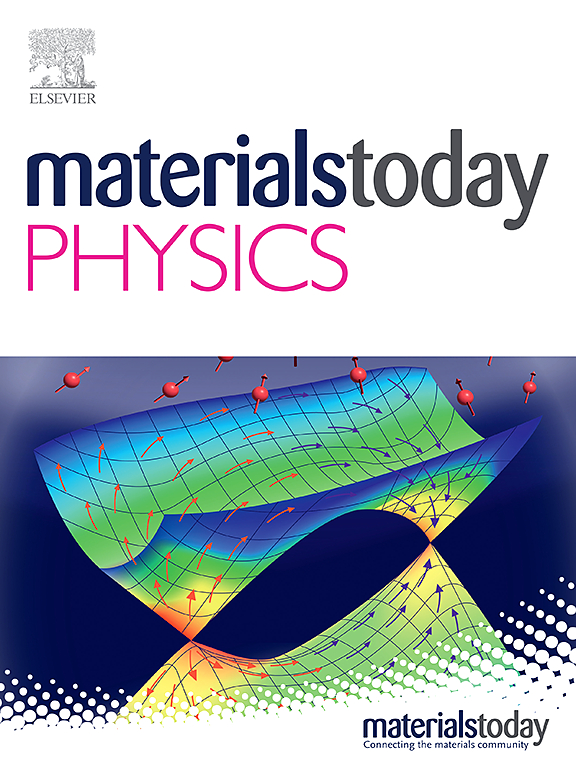Uncovering the origin of emission wavelength shift and anomalous intensity enhancement at elevated temperature in phosphors
IF 9.7
2区 材料科学
Q1 MATERIALS SCIENCE, MULTIDISCIPLINARY
引用次数: 0
Abstract
White light emitting diodes (LEDs) are the primary source of lighting in this modern era, but it has not been understood why their emission light becomes inconsistent with increasing temperature. To investigate the origin of this problem, we studied chloroborate phosphors, i.e., Ba2Ln(BO3)2Cl:Eu2+ (Ln = Y, Gd, Lu), based on first-principle DFT calculations. Using the frozen phonon approach, we analysed the effect of raising temperature on the 5d to 4f transition energies of Eu2+ doped at a Ba12+ site in a 2 × 2 × 2 supercell of Ba2Ln(BO3)2Cl. Our results suggest that at high temperatures the interactions of the Eu2+ ion with its surrounding anions in Ba2Ln(BO3)2Cl:Eu2+ become strong, causing the Eu2+ ions to vibrate more vigorously from its equilibrium position and sharply increasing the emission energy (Δf-d), which leads to a pronounced heat-induced blue shift (HIB) phenomenon in the phosphors.


揭示了荧光粉在高温下发射波长偏移和异常强度增强的原因
白光发光二极管(led)是现代照明的主要光源,但其发光随温度升高而不一致的原因尚不清楚。为了研究这个问题的根源,我们基于第一性原理DFT计算研究了氯硼酸盐荧光粉,即Ba2Ln(BO3)2Cl:Eu2+ (Ln = Y, Gd, Lu)。利用冷冻声子方法,我们分析了温度升高对Ba2Ln(BO3)2Cl 2×2×2超级单体Ba12+位掺杂Eu2+ 5d到4f跃迁能的影响。我们的研究结果表明,在高温下,Ba2Ln(BO3)2Cl:Eu2+中的Eu2+离子与周围阴离子的相互作用变得强烈,导致Eu2+离子从平衡位置振动更剧烈,并急剧增加发射能量(Δf-d),从而导致荧光粉中明显的热致蓝移(HIB)现象。
本文章由计算机程序翻译,如有差异,请以英文原文为准。
求助全文
约1分钟内获得全文
求助全文
来源期刊

Materials Today Physics
Materials Science-General Materials Science
CiteScore
14.00
自引率
7.80%
发文量
284
审稿时长
15 days
期刊介绍:
Materials Today Physics is a multi-disciplinary journal focused on the physics of materials, encompassing both the physical properties and materials synthesis. Operating at the interface of physics and materials science, this journal covers one of the largest and most dynamic fields within physical science. The forefront research in materials physics is driving advancements in new materials, uncovering new physics, and fostering novel applications at an unprecedented pace.
 求助内容:
求助内容: 应助结果提醒方式:
应助结果提醒方式:


